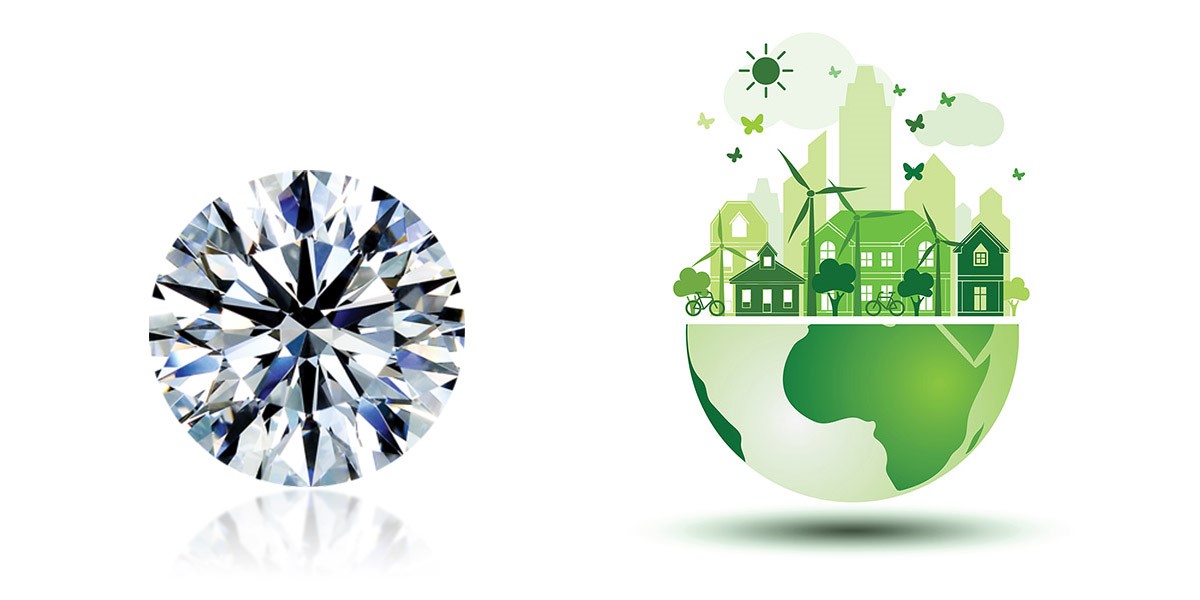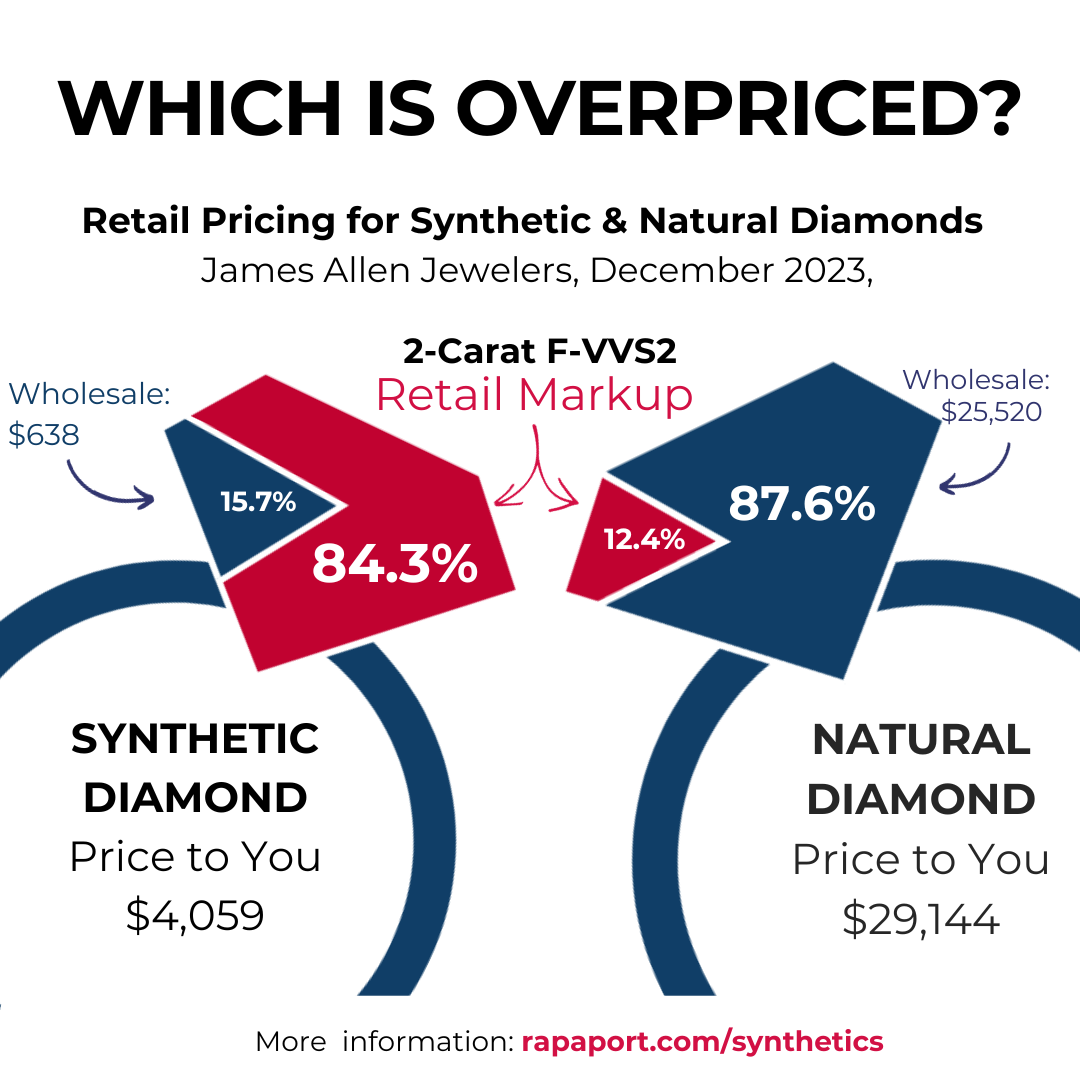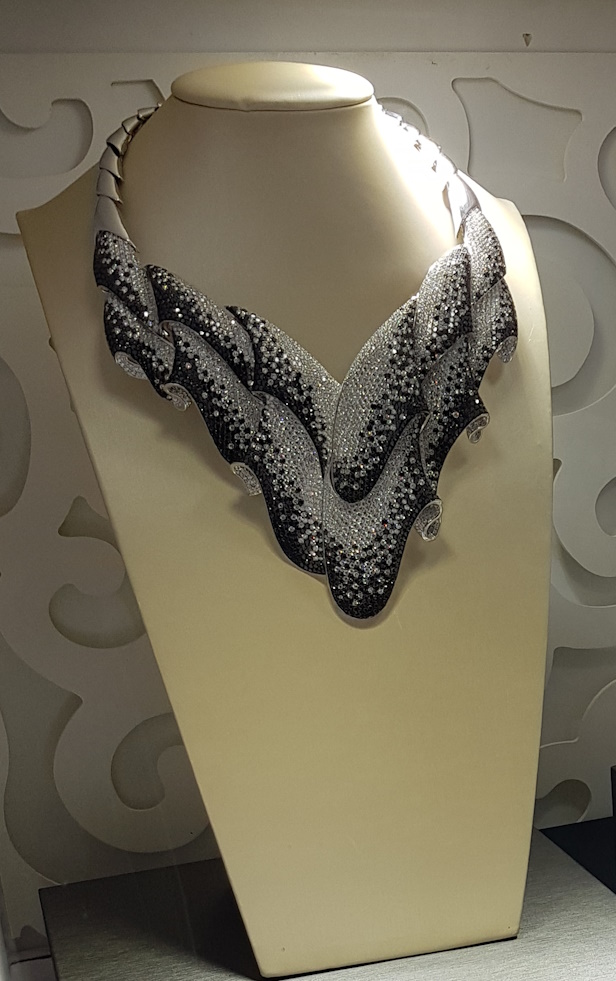As I have documented on this blog before, the price of lab grown diamonds are continuing to fall of a cliff. Whilst data states that lab grown diamonds have halved in price since mid-2022, which was the same time we started selling lab grown diamonds, my experience is that lab grown diamond have decreased by between 60-90% in price – a huge fall in just 18 months!
Lab Grown Diamonds are Everywhere!
A report from InStore magazine shows that 90% of jewellers in the US are now selling lab grown diamonds, either by request or in their stock. This means that lab grown diamonds are pretty much ubiquitous now, especially when compared to say five years ago, when almost no jewellers were selling them. My opinion of lab grown diamonds is one that I think is common amongst the entire industry, and can be summarised with the following points:
- They are great for general jewellery (pendants, earrings, necklaces etc), but their value makes them more suitable for the lower end of the engagement ring market.
- Lab grown diamonds are yet another technological innovation that is eroding the traditions of the industry – much like online selling and CAD/CAM have done in the past 25 years.
- Due to their value and how they are made, lab grown diamonds don’t have the allure or mystique of natural diamonds.
- They are real diamonds, and more likely than not, look a lot better than their natural counterparts as they are cheaper and produced by man.
- The margins on lab grown diamonds are much better than natural diamonds, hence more profit for the seller and a cheaper price for the buyer.
In other words, we, and a lot of other jewellers, having been involved in the diamond industry for many years, begrudgingly sell lab grown diamonds due to customer demand and the “juicy” profit margins on them – not loyalty to the natural diamond industry or “traditional values”.
The Rise of Lab Grown Only Stores
The past few years have seen a number of jewellers being established selling only lab grown diamonds only. Whilst this may seem fine, there a few problems these all have in common:
- They promote lab grown diamonds as an ethical option, mostly due to the fact that hundreds of tonnes of ore doesn’t need to be dug out of the ground, but also due to supposed human rights abuses in the diamond mining industry. Whilst these claims may have some substance, they have been proved to be yet another case of greenwashing. However, none of them mention the fact that lab grown prices are crashing and that what you buy from them now, will most likely be worth half of what you paid in one year.
- With lab grown diamonds constantly going down, their entire business model is on shaky ground, and within a few years, anyone selling lab grown diamonds only will on par with fashion jewellery sellers such as Pandora or Swarovski – not selling engagement rings worth thousands of dollars.
- Holding a large stock of lab grown diamonds means that they need to sell at a higher price in order to turn a profit. Due to the fact that lab grown price declines are so rapid and large, holding stock of lab grown diamonds means that the decline in price of a lab grown diamond may completely erase a jeweller’s profit margin in just a few months if sold at the market price.
This last point is what seems to have sparked a war within the industry in the last couple of months, with some saying that high margins are unethical.

Above: Apparently lab grown diamonds will create a utopia…
And So The War Continues…..
As documented last year, the main opponent of lab grown diamonds is Martin Rapaport. In November 2023, Martin published a new warning, seemingly aimed at consumers, even though very few if any consumers know who Martin Rapaport is, let alone care what he says. In the warning, Martin points out the obvious that lab grown diamond prices are crashing, and even makes the following snide remark:
“Your engagement ring, an heirloom that you and your family will treasure forever (God willing), deserves to be worth more than the dinner you were eating when it was presented to you!”
Since then, Martin has published a graphic showing the seemingly outrageous markup of lab grown diamonds compared to natural diamonds. In addition to this, a Melbourne based jeweller posted on LinkedIn that a particular retailer was selling lab grown diamonds at an 850% markup, saying it was unethical to make such a markup. This post sparked a heated debate from various industry participants, including none other than Martin Rapaport.

Above: Rapaport’s comparison between natural and lab grown diamond markups.
In my opinion, the figure of 850% markup may well be a bit misleading, as we don’t know what the cost of that particular lab grown diamond was, however, it is clear that many jewellers, especially lab grown only retailers are charging excessive prices, both in a bid to make more profit, but also to try to artificially slow the decline in price of lab grown diamonds. Whilst it may not be ideal for their customers who are buying their products, it is certainly not unethical to price your products with a large margin in order to make a profit. Indeed, the irony a brick and mortar jeweller calling another jeweller unethical due to their margins is not lost on me.
Natural and Lab Grown Diamonds Will Co-Exist
At the end of the day, these silly wars of words do nothing to benefit the industry. The fact is that lab grown diamonds and natural diamonds will, at some point in time, peacefully co-exist within the industry. More than likely, lab grown diamonds will create a boom for general jewellery – diamond set jewellery, with both coloured and colourless diamonds will be sold at a fraction of the price than they currently are. Jewellery designers will have a field day, with designs previously thought to be impossible able to come to life thanks to lab grown diamonds. Low priced engagement rings will also no longer be small and heavily included – but big and sparkly.

Above: Jewellery like this may become common with designers being able to produce pieces at a fraction of the price.
However, at the same time, natural diamonds need to change as well. The basis of Martin Rapaport’s argument is that lab grown diamonds don’t hold their value like natural diamonds, hence should not be used in fine jewellery such as engagement rings. However, it is clear that over the past 15 years that this is simply not true. Analysis from Avi Krawitz shows natural diamonds follow a distinct boom and bust cycle – something that Martin Rapaport conveniently left out of his “consumer alert”. Anecdotally, this boom and bust cycle is usually caused by the industry speculating on prices on the upside and then attempting to liquidate holdings on the downside. This, along with price and provenance transparency are issues that the natural diamond industry need to address to “win the war” over lab growns.